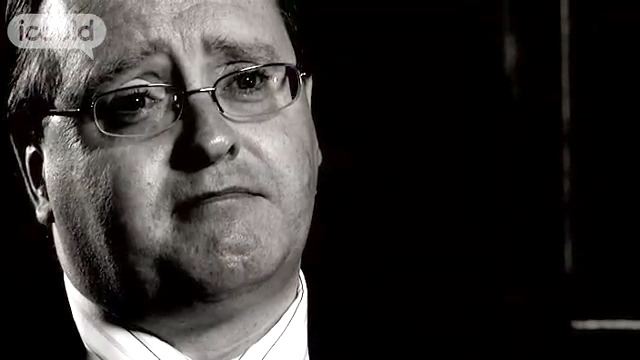Naval Architect
Carnival Shipbuilding
Stephen P
00:00:03 My name is Stephen P, and I’m Vice President, Chief Naval Architect of Carnival Shipbuilding. As a Naval Architect I design new ships. So we start by drawing a line on a piece of paper, to represent the length of the ship. And then from that line we build up the whole shape of the ship, the layout, the decks, the cabins, the public rooms, where the engines go. From that first line to the final delivery, and the ship being handed over and actually entering service, is about four years. But I also designed a transatlantic liner, the only one of its kind built in forty years, the Queen Mary II. Quite a stronger, much bigger, more powerful ship than the normal cruise ships.
00:00:53 Well my interest in ships began by watching Blue Peter, way back in 1967, when I was 7 years old. And Valerie Singleton, the then Presenter, went on board the old Queen Elizabeth, the Cunard liner that was nearing the end of her life, and Valerie Singleton sailed on the ship from Cherbourg to Southampton. And they showed the public rooms, and the various aspects of this great ship, that really captured my imagination. And I thought then well wouldn’t it be great to grow up and design another ship, that would one day be bigger and better than the Queen Elizabeth. They actually said that there would never be another big liner, and so I was encouraged by my school teachers to write to Blue Peter to tell them that they were wrong, and that one day I was hoping to design and build a new ship.
00:01:48 Blue Peter originally wrote back to me and said they applauded what – my ideas and what I wanted to do, but that I shouldn’t be disappointed if I didn’t achieve it. And the whole sort of twist to the tale, is that when the Queen Mary II was delivered, they actually came back on board, and they found me in the restaurant, interviewed me, and then gave me my gold Blue Peter badge, to recognise that I’d actually done what I’d hoped to do all those years before.
00:02:21 Certainly changing from Chemistry to do the Naval Architecture was a difficult decision. I knew that it’s something I really wanted to do, but there was a certain element of risk there. And as with most things in life, you have to weigh up the risk and take the decision. Throughout my career, various things have happened, especially with the Queen Mary project – in fact the project was put on hold two or three times, and it looked as though it was going to be cancelled, because it was becoming more and more expensive. And so it was a challenge to convince the management that the ship that I was proposing was the right one, and that some of the cheaper options wouldn’t be the correct ones.
00:03:11 So that was a challenge, but when you have challenges such as that, and you actually solve them, or overcome them, it’s a very good feeling, and it’s something that I know drives a lot of people, actually meeting that challenge.
00:03:30 Well my boss, Micky Arison, when we signed the contract for Queen Mary II, he said – what are you going to do when that ship’s delivered? And I said to him that I would like to design Hindenburg II, because I’m a great fan, and great proponent, of airships. And I firmly believe that airships will come back in the future, and there are many, many things in common with a ship and an airship, so I’d like to pursue that if I had the opportunity.
00:04:05 ENDS
Stephen P is a Naval Architect at Carnival Shipbuilding. He was inspired by a Blue Peter story about the QEII when he was seven years old. The presenter said that there wouldn’t be any more big liners in the future. Stephen designed the Queen Mary II and got a gold Blue Peter badge for proving them wrong.
More information about Rail and rolling stock builders and repairers
The UK average salary is £29,813
There are 37.5 hours in the average working week
The UK workforce is 47% female and 53% male
Future employment
- Examines drawings and specifications to determine appropriate methods and sequence of operations
- Fits and assembles parts and/or metal sub-assemblies to make train engines
- Examines rolling stock for defects, removes, replaces and repairs faulty parts
- Inspects and tests new and repaired machinery for conformity with standards and specifications
- Oils and greases train engines
- Maintains record of repairs and maintenance carried out

